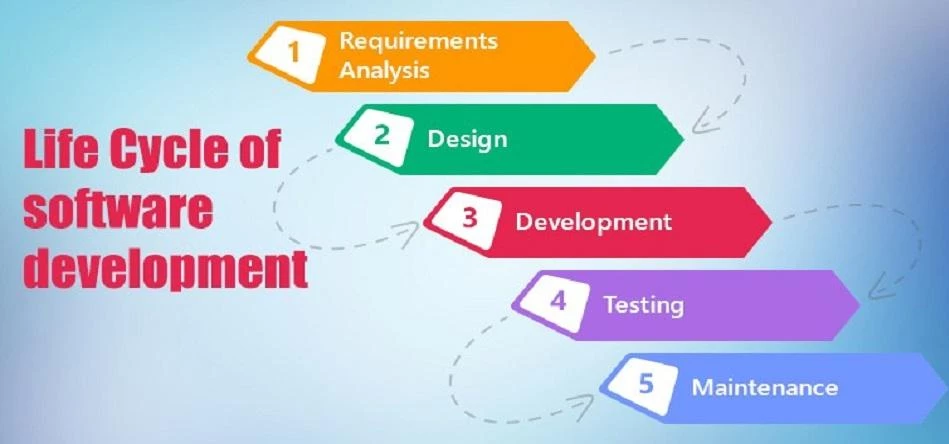
Partner Article
What are the aspects needed to be taken care of in the Life Cycle of a Software Development?
A lot goes into the development of software and the entire process is actually lengthy and complicated. However, through Software Development Life Cycle it’s easy to build good software while each phase in the life cycle consists of its own process and deliverables feeding into the next phase. Meanwhile, the process requires a complete plan for its development and it’s followed by a variety of tests to check its working. The developing company and the client need to have a clarity regarding the steps involved in software development. Special emphasis needs to be put on the steps of SDLC as this way best end results are guaranteed.
Here we discuss the basic essentials of the SDLC covering development of various kinds of software: Feasible
Checking the feasibility of the software is the first step in the software development. This way you can check whether the software is capable to offer better return on the investment.
Design and Requirement Analysis
Once the software passes the feasibility test, next designing the interface and the internal data functioning is required. This software development phase comprises building of basic blueprints of the software alongside the requirement list of the raw data that is going to be needed during the development process.
Generation of Codes
Once the generation of structure of the software is done, rest of the process is handled by the programmers. The software design has a programmed implementation requiring programmers employ a range of tools, like compilers, debuggers and prepare codes for software in the programming language preferred by you.
Testing Assurance of Quality
Once you have prepared the code for the software, it’s the right time for the software to run tests, which are done to review the working of codes written for the software. Numerous planned steps go into it, where first the individual codes are tested. Once the efficiency of individual codes is ensured, it’s time that the software as a whole undergoes final testing. These tests prove to be of great help when finalizing the development of the software and to maintain its quality so that it runs smoothly on the desired platforms. At this step, it’s easy to detect flaws. If there are any it’s reported to the developers’ team for needed corrections.
Support for Maintenance
Maintenance is the crucial aspect of the software and it’s quite important as the client for whom the software is developed may require modifications to the software. The software must be developed in a manner that in case the changes are required then the modification can be done easily.
Furthermore, here are the five phases that occur during the Software Development Life Cycle:
Requirement Analysis Design Coding Testing Implementation
Benefits:
Through SDLC you can create a product that’s cost-efficient, effective and of high quality. As an application is created, the SDLC covers the proper deployment and decommissioning of the software. Just as mentioned above, SDLC methodology consists of the following stages, such as: Analysis (requirements and design), construction, testing, release and maintenance (response). Integration of automated security testing into the SDLC process is easier through the use of cloud-based platform.
As you look around, you will easily come around various companies that offer software development, testing and maintenance to worldwide clients. You just need to do thorough research and end up with the right company so that thequality software is delivered to various clients globally.
It’s vital to continuously improve and fix the software. With the right help robust bug capturing in your application becomes easier and every time a bug is noticed, you receive a notification and you are enabled to easily review them, tie the bug to a separate piece of code and then you are required to trace the cause back to latest changes.
Once you settle upon the right company, then easy categorization is ensured as well as searching and prioritization of errors so that in case bug occurs, it’s easy for your team to find the main reason. The development time and effort that’s easily saved by capturing the bugs is very useful.
Hope this helps in knowing why development groups must embrace a range of methodologies.
This was posted in Bdaily's Members' News section by Octal Info Solution Limited .








 Apprenticeships: Lower standards risk safety
Apprenticeships: Lower standards risk safety
 Keeping it reel: Creating video in an authenticity era
Keeping it reel: Creating video in an authenticity era
 Budget: Creating a more vibrant market economy
Budget: Creating a more vibrant market economy
 Celebrating excellence and community support
Celebrating excellence and community support
 The value of nurturing homegrown innovation
The value of nurturing homegrown innovation
 A dynamic, fair and innovative economy
A dynamic, fair and innovative economy
 Navigating the property investment market
Navigating the property investment market
 Have stock markets peaked? Tune out the noise
Have stock markets peaked? Tune out the noise
 Will the Employment Rights Bill cost too much?
Will the Employment Rights Bill cost too much?
 A game-changing move for digital-first innovators
A game-changing move for digital-first innovators
 Confidence the missing ingredient for growth
Confidence the missing ingredient for growth
 Global event supercharges North East screen sector
Global event supercharges North East screen sector